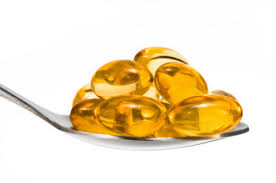 FDA has just finalized its 2007 proposed rule prohibiting nutrient content claims for the omega-3 fatty acids docosahexaenoic acid (DHA) and eicosapentaenoic acid (EPA). The final rule also prohibits some claims for alpha-linolenic acid (ALA), while taking no action with respect to other such claims for ALA.
FDA has just finalized its 2007 proposed rule prohibiting nutrient content claims for the omega-3 fatty acids docosahexaenoic acid (DHA) and eicosapentaenoic acid (EPA). The final rule also prohibits some claims for alpha-linolenic acid (ALA), while taking no action with respect to other such claims for ALA.
A nutrient content claim is a statement on a food product (including any dietary supplement) that directly or implicitly characterizes the level of nutrient in the food. Examples of nutrient content claims include “high in vitamin D” or “low sodium.” Generally, food marketers—like dietary supplement companies—may only make nutrient content claims if the claims accord with FDA regulations or if the marketer notifies FDA of the claim. FDA has provided a list of approved nutrient content claims. Nutrient content claims based on a marketer’s notification to FDA must be supported by an authoritative statement published by a scientific body of the United States. These notifications must be filed 120 days before the marketer introduces the product containing the statement into interstate commerce.
Before FDA issued its proposed rule in 2007, it received three notifications for omega-3 nutrient content claims. Each notification was based on “authoritative” statements from the Institute of Medicine of the National Academies (IOM). However, the notifications contained “multiple, sometimes conflicting nutrient levels for” DHA, EPA, and ALA.
As explained in the final rule, FDA has determined that the IOM report cited by the three notifying companies does not contain an authoritative statement of the reference value of either DHA or EPA. Thus, there is no established level of DHA or EPA upon which to base a nutrient content claim, and all such claims are prohibited. FDA prohibited only one set of nutrient content claims for ALA, on the other hand. FDA is “taking no action at this time” with respect to the other set of ALA nutrient content claims—this set may therefore remain on the market.
FDA provided a helpful chart in its final rule which lays out the permissible ALA nutrient content claims:
| Nutrient content claim for ALA | Conditions for making the claim |
| High | ≥ 320 mg of ALA per RACC (≥ 20% of 1.6 g/day) |
| Good Source | ≥ 160 mg of ALA per RACC (≥ 10% of 1.6 g/day) |
| More | ≥ 160 mg of ALA more per RACC than an appropriate reference food (≥ 10% of 1.6 g/day) |
If you have any questions about nutrient content claims, or any other claims that may appear on dietary supplements, please call us anytime at 516-294-0300. Our team of FDA lawyers experienced in dietary supplement claims is always here to help.
